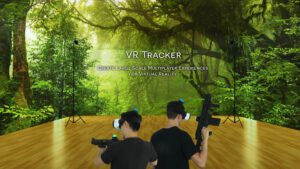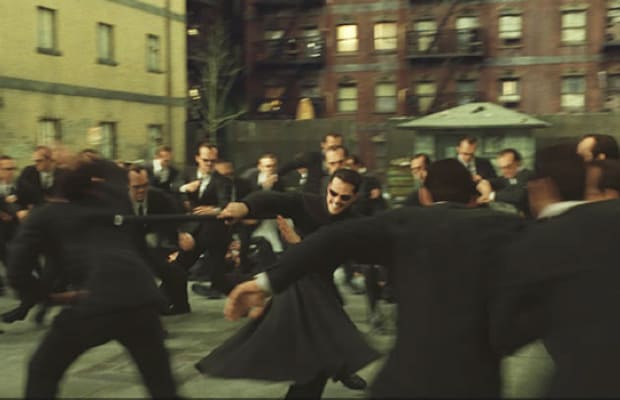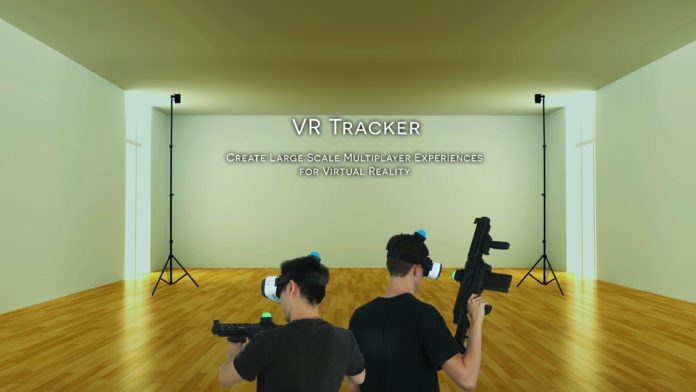With more people reaching for a VR headset to get their workouts in, the concept of tracking is becoming more and more important. While there are a lot of options out there for tracking and many more planned for release in the coming months, it’s important to know what works best for your unique VR goals. Since your goal is working in VR, you want a tracker that’s going to handle explosive movements, lateral and forward motions and total body tracking. We had a chance to chat with Daniel Carvalho, head of marketing and business at VR Tracker about their tech and how it could be the solution you’re looking for.
VRFI: There are a lot of trackers out there. Tell us about you and your company. and where your tech is working today.
Daniel Carvalho: VR Tracker is a young company looking to improve VR experiences by bringing large scale multiplayer tracking. We incorporated less than a year ago and already released developer packs of our tracking technology. Most of our clients want to create lasertags in VR, but not only [that]: it is also being used by VR architecture companies or research labs. Our goal is to release of Version 1 by the end of June!
VRFI: Multiuser trackers sound amazing, and expensive. How are you positioning yourself in the segment and what makes your tracker unique?
DC: Our tracker makes possible the creation of the large-scale multiusers experiences in VR. Our independent system can be use with all kind of VR headsets so that it can fit on the different needs and budgets. And all of that for an affordable price, so that we can see more multiusers experience in VR soon.
[Editor’s note: Between their gateway, tag, camera and holder, the offerings in their store add up to just over $350.]
![]()
VRFI: How does your tracker stack up against what’s already out there?
DC: There are certainly alternatives to what we do. However, most options are significantly costlier (5 to 10 times as much) and use other ways to track people, but nothing quite like ours. One main advantage of our way is that the camera in theory can track any number of trackers (or players). We are currently working on a solution to have from 8 to 10 players play in the same room. Yet, we do know that this platform is very scalable and once given time this number may easily increase. Also, contrary to most pure VR technology, we have made ours very compatible so you can integrate with most VR headsets, but also create tracked accessories and controllers to improve the interaction.
VRFI: Is there anything in particular about yours that would work best for fitness applications?
DC: There are certainly many ways to use our system to develop fitness applications. Our primary market and early adopters will most likely be lasertags in VR. However, the possibilities are endless surrounding the main idea of being mobile in a virtual reality. This adds a very interesting element of physical activity to a market that historically has been immobile. From there you can take this as far as your imagination goes, by making obstacle courses on mountain cliffs, rock climbing one of the most dangerous mountains in the world and doing yoga in a monk temple.

VRFI: How important is tracking to making VR more mainstream?
DC: Tracking adds another element to VR and allows developers to go one step further in providing a one-of-a-kind experience. It creates a more immersive experience, while also making it more natural and avoiding nausea and any sort of dizziness. It also allows for multiple other new applications, such as having museums use it to tell a story, like walking in ancient Rome and exploring the city, or having architects and realtors show houses that have not been built yet while allowing buyers to walk and live the house.
VRFI: What are the limitations of the current VR world that’s keeping it from becoming mainstream? And what keeps it from becoming a solution to fitness?
DC: There are three key elements that are stopping VR from becoming mainstream: it’s cost, technical limitations, and skepticism. Right now, VR headsets are very costly and the whole structure surrounding it is very expensive for home use. The second aspect is the technical limitations that come with it, you must be immobile to play any game, this is a key obstacle to developers. And finally, some people don’t like change, it takes a huge game and project to get people excited and interested in VR. We hope that our project will at least help with the first two elements, by providing a new way for them to create content in a cost-efficient matter.
VRFI: Where do you see fitness fitting into the landscape of virtual reality as it is today and beyond?
DC: We see fitness as a key element to VR. As technology evolves we will eventually be able to feel as if we were inside the Tron universe or the Matrix, and quite frankly trying to fight Agent Smith is a lot more thrilling and motivating than running 5 miles. It breaks in a way the stereotype of the lazy gamer, as gamers now will become active individuals because they are interested in the experience. Physical activity will certainly become a consequence of this evolution.

VRFI: Have you ever worked out in VR?
DC: I personally have never worked out in VR, but boy oh boy am I excited for our demos to be ready so we can get our sweat on fighting zombies and killing mercenaries.
VRFI: Would you recommend anyone workout in VR?
DC: I would, once safety measures have been taken I believe VR will motivate people immensely. Right now, we have two kind of people that don’t exercise: those that don’t want to and those that want to but are not motivated enough. Virtual reality will hopefully bring those people off their couches. I’m not sure if this will be the intent of developers but it certainly will be a consequence.











